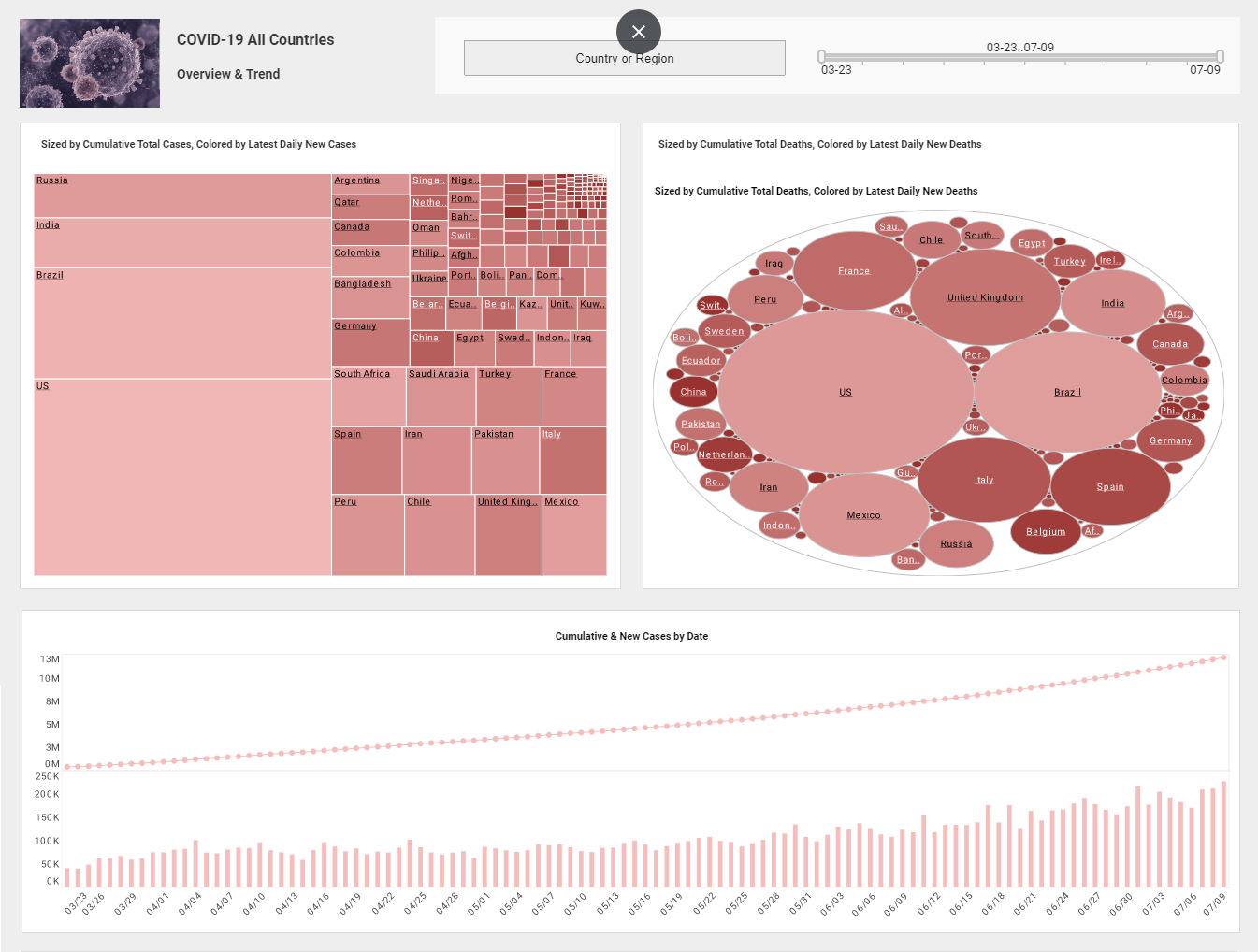Best Practices for Applying Analytics to Big Data
This is the continuation of the transcript of a webinar hosted by InetSoft on the topic of "Business Analytics and Big Data Exploration."
That is definitely a best practice for applying analytics to big data. Assess your maturity, and start from where you are and build from there. Another best practice is to really look at the signals. Understand not just the structured data that we’ve traditionally looked at with business intelligence, but what are the new signals that are coming from click stream data, RFID tags, asset intelligence like with the windmills.
What is social media saying about my products and my reputation? What’s my workforce’s opinion through the wisdom of crowds? So lookat all of the signals when I ask that soft question and make sure that we are taking all of the views into when making decisions.
Another interesting thing about it is that it really has a very strong focus on the decision to be made and the decision maker. And that idea of start where you are is very key. I was talking recently to a marketer who asked me about focus groups, does that count as analytics? And I said, well, on the one hand, focus groups have largely been discredited. There’s a well-known tendency for participants to tell you what you want to hear.
Who Is the Audience for the Analytics?
On the other hand, I think it’s a starting point. You can get more sophisticated from there and build on it, and if you’re a decision maker, ultimately if somebody is comfortable with focus groups and that’s all they’re comfortable with, you have to really stick with that to some degree. So I think you have to think about what’s the intended audience and how is this information going to be used.
Social media is a hot topic today, and many of our clients who are in the product business, especially consumer products, are listening to blogs and social media for diagnosis of issues that relate to their product, and they’re correcting them before the call center ever hears from a client about an issue. So you can look at the signal based on the question that you’re asking and really get new insight and take immediate action that can change the way a product is perceived or adopted.
Have you heard the phrase “crunchy questions.” What is a crunchy question? And how does it help in organization focus on the right analytical pursuits? You’re looking for questions that you can really buy it into, that are serious, substantive, important to your business if you find the answer.
Analytics Questions That Move the Needle
They can really move a needle on your performance. They are questions on which you can actually get some data. It’s hard to do analytics without data so if you can gather any data you might want to look for some other crunchy questions, and then I think finally these are questions that are going to lead to action.
I was turning to the head of a commercial analytics groups at a pharmaceutical firm recently and he said, you know people come to ask us whether we can do promotions analysis or our promotions working. Now that’s a crunchy question, but he answers in a sort of a crunchy way. He says “We can find out three possible things here, either it’s a fantastic success, it’s marginally successful, or it’s unsuccessful.” What are you going to do in each of those cases? And it sounds so cheeky, but it puts the emphasis on what action are you going to take on the basis of the analytics that they performed.
One of the key things about a crunchy question is I have to look at the business process to make sure that I take the answer to the question and actually implement it. If I have come up with a new pricing scheme by product, by distribution channel, I might need to change my compensation systems, my sales force compensation.
I may need to link inventory information with this new pricing model to ensure its inventory levels go up and down as I’m tweaking that model. So crunchy questions are asking the ones that are not only actionable in informing my decisions, but they also require monitoring and improving the processes in the business. It is all about weaving it together.
Tie Analytics to Actual Decisions
Tie analytics to the actual decisions that they need to make. Identify what are their key decisions. Try to figure out which ones need some help. You know which ones need to be improved, and then apply several interventions. Analytics in my research are the most common intervention but you also find that they’re typically applying changes in culture and leadership to improve their decision making, educating frontline people, changing the whole decision process. So analytics are really only one intervention that organizations need to make. They need to be done in concert.
Analytics is about putting the right information in the hands of people where it matters. On the front line, if I’m dealing with the customer I should know what your expectations are and what the next best offer I should make to you is. In the strategy room, in the boardroom of a company you should look at your strategy and understand what the risk of not achieving it or the opportunities that you’re missing with analytics and how I weaved that into my decision making. So it’s moving from an intuition based culture to a fact based culture where the facts really matter. If you can measure it, you can improve it.



